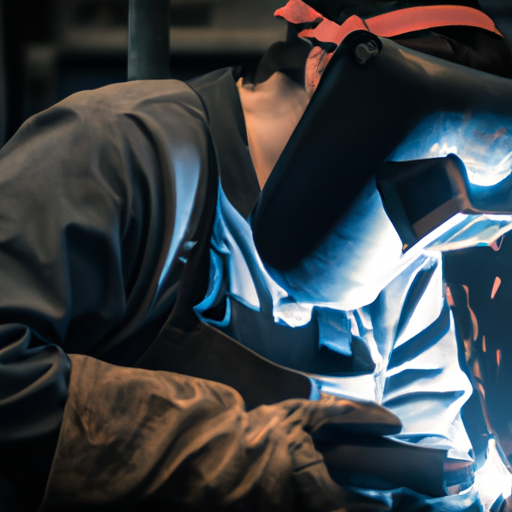Imagine being a skilled welder, adept at joining metals and creating structures with precision. But then, you come across a welding challenge that makes you pause and wonder – what is the most difficult thing to weld? From intricate alloys to unconventional materials, the world of welding offers its fair share of complexities. In this article, we explore the realm of welding and unveil some of the toughest materials to join together with the welding process. Get ready to embark on a fascinating journey into the art of welding, as we uncover the most difficult thing to weld.
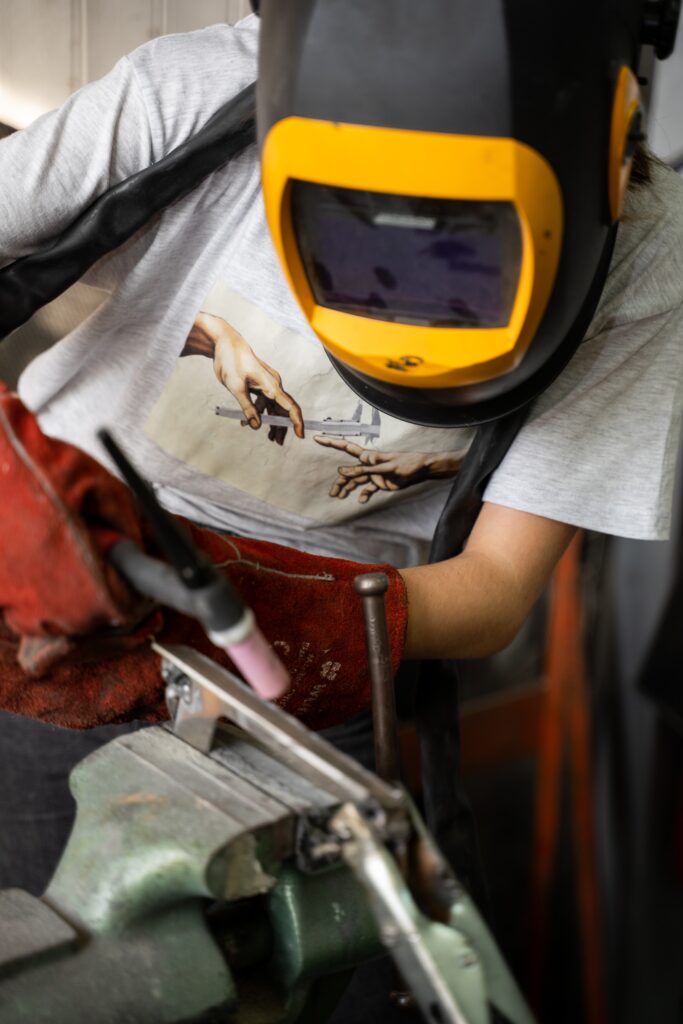
Understanding the Basics of Welding
Definition of welding
Welding is a process that involves joining two or more pieces of metal together by melting and fusing them. It is a method commonly used in various industries, including construction, automotive, and manufacturing. The primary goal of welding is to create a strong and durable bond between the metals, allowing them to function as a single solid structure.
The significance of welding
Welding plays a significant role in our everyday lives, despite often going unnoticed. From the buildings we live in to the cars we drive, welding ensures the structural integrity and safety of essential items. Without welding, many of our modern conveniences and advancements would not be possible. It is through the skillful art of welding that we can create and repair intricate structures, making it an indispensable process in various industries.
Types of welding processes
There are several different types of welding processes, each suited for specific applications and materials. Some common welding processes include:
-
Gas Metal Arc Welding (GMAW) or MIG (Metal Inert Gas) Welding: This method uses a consumable wire electrode and a shielding gas to protect the weld from environmental contaminants.
-
Shielded Metal Arc Welding (SMAW) or Stick Welding: In this process, an electrode with a flux coating is used to create the weld. The flux coating creates a shielding gas when heated, protecting the weld from impurities.
-
Gas Tungsten Arc Welding (GTAW) or TIG (Tungsten Inert Gas) Welding: TIG welding uses a non-consumable tungsten electrode to produce the weld. A separate filler material is added to the joint if necessary.
-
Flux-Cored Arc Welding (FCAW): This process is similar to MIG welding, but uses a tubular wire electrode with a flux core. The flux produces a shielding gas when heated, and no external shielding gas is needed.
Each welding process has its advantages and disadvantages, and the choice of method depends on factors such as the materials being joined, the type of joint required, and the specific application.
Factors that Determine Welding Difficulty
Understanding welding difficulty
Welding difficulty refers to the level of skill, effort, and expertise required to successfully complete a weld. Some welds are relatively easy to accomplish, while others pose significant challenges. Understanding the factors that contribute to welding difficulty is crucial for achieving high-quality welds consistently.
Impact of material properties
The properties of the materials being welded greatly influence the welding difficulty. Factors such as the melting point, heat conductivity, thickness, and chemical composition of the metals play a role in determining the welding parameters and techniques required. Materials with high melting points, poor heat conductivity, or complex chemical compositions may present challenges during the welding process.
Influence of welding process and techniques
The chosen welding process and techniques also impact the overall difficulty of a weld. Different welding processes have unique characteristics, and some may be better suited for certain materials or joint types than others. The skill and experience of the welder in selecting the appropriate process and applying the correct techniques can significantly affect the success of the weld.
Most Weldable Materials
Introduction to commonly welded materials
Certain materials are considered more weldable than others due to their inherent properties and ease of joining. understanding these commonly welded materials is essential for determining the feasibility and difficulty of a specific welding project.
Properties of easy-to-weld materials
Easy-to-weld materials possess favorable characteristics that make the welding process simpler and more straightforward. Typically, these materials have low melting points, good heat conductivity, and minimal chemical reactions during welding. They are often readily available and exhibit predictable welding behavior, allowing for consistent and reliable welds.
Examples of easy-to-weld materials
Some examples of easy-to-weld materials include mild steel, low carbon steel, stainless steel (in certain grades), and aluminum alloys. These materials are widely used in various industries and offer favorable welding properties, making them suitable for both novice and experienced welders.
Less Weldable Materials
Understanding difficult-to-weld materials
Difficult-to-weld materials present unique challenges during the welding process. These materials may have high melting points, poor heat conductivity, or complex chemical compositions that require specialized skills and techniques to achieve satisfactory welds. Welding difficult materials often demands advanced welding knowledge and experience.
Properties of hard-to-weld materials
hard-to-weld materials typically possess properties that make them more challenging to join. They may exhibit high heat sensitivity, leading to distortion, cracking, or other welding defects. Additionally, some materials may release harmful fumes, require pre- or post-weld heat treatments, or suffer from poor weldability due to their chemical composition.
Examples of hard-to-weld materials
Materials such as high carbon steel, stainless steel (in certain grades), high-strength alloys, titanium, and certain exotic metals fall into the category of hard-to-weld materials. Welding these materials successfully demands advanced techniques, specialized equipment, and a deep understanding of their unique characteristics.
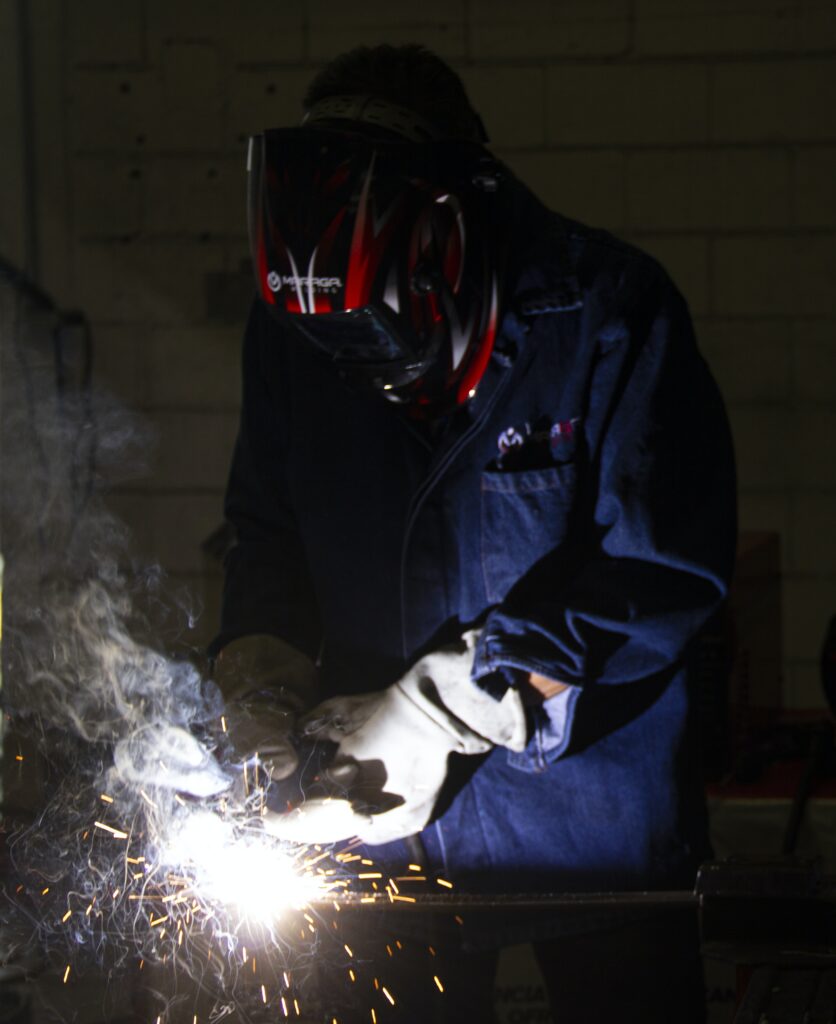
Stainless Steel and its Welding Challenges
Overview of stainless steel
Stainless steel is a widely used material known for its excellent corrosion resistance and aesthetic appeal. However, it presents specific challenges when it comes to welding. Stainless steel contains chromium, which forms a thin oxide layer on the surface, providing the characteristic corrosion resistance. This oxide layer, however, makes it more challenging to achieve strong and defect-free welds.
Why stainless steel is difficult to weld
The main difficulty in welding stainless steel stems from the formation of heat-affected zones (HAZ) during the welding process. The HAZ is an area adjacent to the weld that experiences significant temperature changes, causing the chromium in stainless steel to combine with carbon, reducing its corrosion resistance. This phenomenon, known as sensitization, can lead to weld decay and compromised integrity.
Common problems in welding stainless steel
Welding stainless steel can result in issues such as distortion, cracking, poor penetration, and insufficient joint strength. It requires precise control of welding parameters, such as heat input and cooling rate, to minimize the formation of the HAZ and prevent sensitization. Additionally, the choice of filler material is crucial, as it influences the final corrosion resistance and mechanical properties of the weld.
High Carbon Steel and its Welding Difficulties
Understanding high carbon steel
High carbon steel contains a higher percentage (typically above 0.60%) of carbon compared to other types of steel. While high carbon steel offers superior hardness and wear resistance, it poses significant challenges during the welding process. The high carbon content increases the risk of cracking and reduces the weldability of the material.
Reasons behind its welding difficulty
The presence of carbon in high carbon steel affects its weldability due to several factors. The carbon content contributes to the formation of hard and brittle regions in the heat-affected zone, increasing the susceptibility to cracking. Additionally, the high carbon content absorbs more heat during welding, necessitating precise control of heat input to prevent distortion and maintain the desired mechanical properties.
Challenges in welding high carbon steel
Welding high carbon steel requires careful pre-weld and post-weld heat treatments to minimize the formation of brittle structures and reduce the risk of cracking. It is crucial to select suitable welding processes and filler materials to ensure compatibility with the high carbon content. Skilled welders with extensive knowledge and experience in working with high carbon steel are essential to overcome the inherent difficulties and produce high-quality welds.
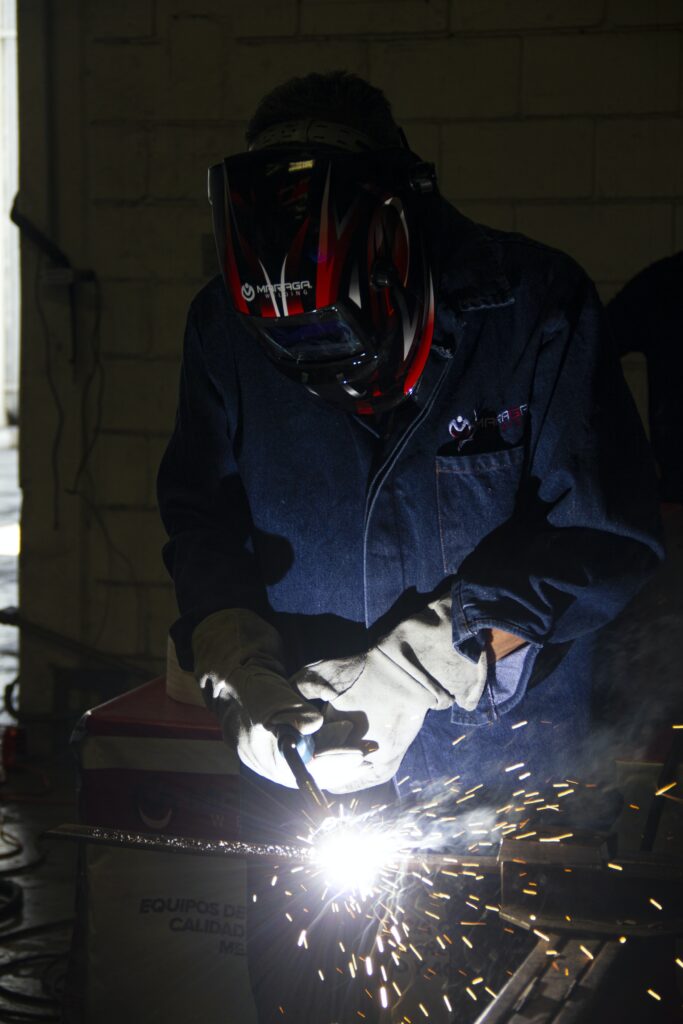
Aluminum and its Welding Challenges
Understanding aluminum
Aluminum is a lightweight and versatile metal widely used in various industries due to its excellent strength-to-weight ratio and corrosion resistance. However, it poses unique challenges in the welding process. Aluminum has a high thermal conductivity and a low melting point, making it susceptible to distortion and poor weld quality if not properly handled.
Why aluminum is difficult to weld
Aluminum’s high thermal conductivity causes the heat to dissipate rapidly, making it challenging to maintain the required temperature for successful welding. The oxide layer present on the surface of aluminum also poses a challenge, as it can contaminate the weld and interfere with the bonding process. Additionally, aluminum’s low melting point can lead to excessive heat input and distortion if not carefully controlled.
Probable issues in aluminum welding process
Common issues encountered during aluminum welding include poor fusion, lack of penetration, and insufficient joint strength. Skilled welders must employ specialized techniques such as increased heat input, modified shielding gas compositions, and proper cleaning of the oxide layer to achieve reliable and robust aluminum welds. Knowledge of aluminum-specific welding processes, such as TIG welding, is crucial for successful aluminum welding.
Overcoming Welding Difficulties
Importance of proper welding skillset
Overcoming welding difficulties requires a combination of proper skills, knowledge, and experience. Skilled welders possess an understanding of various welding processes, materials, and techniques, allowing them to identify and address potential challenges. Ongoing training and education in welding practices contribute to the development of a strong skillset necessary to overcome welding difficulties effectively.
Potential solutions to welding difficulties
When faced with challenging welding situations, there are several potential solutions to consider. Adjusting welding parameters, such as heat input, travel speed, and electrode/filler material selection, can help optimize the welding process for difficult materials. Pre- and post-weld heat treatments, as well as the implementation of specialized welding techniques, may be necessary to mitigate issues such as cracking, distortion, or lack of fusion.
Examples of successful handling hard-to-weld materials
Experienced welders have demonstrated the ability to successfully handle hard-to-weld materials through their expertise and innovative approaches. For instance, advanced technology, such as laser welding or electron beam welding, can offer precise control and minimize welding difficulties for certain materials. Additionally, collaborative efforts between materials scientists, engineers, and welders contribute to the development of new welding techniques and materials designed specifically for challenging applications.
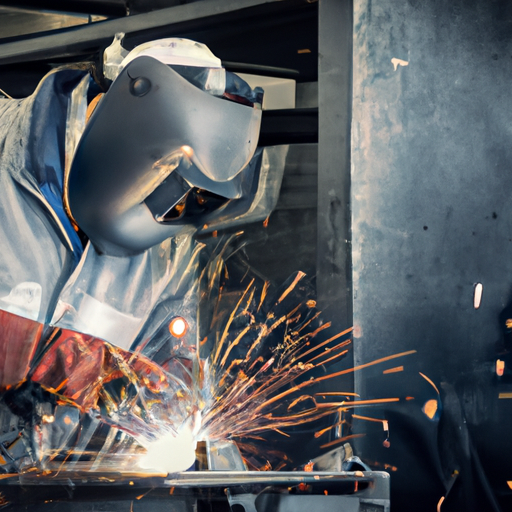
Safety Precautions for Welding Difficult Materials
Importance of welding safety
Welding, particularly when dealing with difficult materials, carries inherent risks that must be mitigated through proper safety precautions. Protecting oneself and the surrounding environment from hazards is crucial to ensure safe welding practices.
Safety measures when dealing with difficult-to-weld materials
When working with difficult-to-weld materials, it is essential to follow safety protocols such as:
-
Adequate ventilation: Ensuring proper airflow and ventilation in the welding area helps remove harmful fumes and gases generated during the welding process.
-
Personal protective equipment (PPE): Wearing appropriate PPE, including welding helmets, safety glasses, gloves, and protective clothing, protects against welding-specific hazards such as arc flash, sparks, and UV radiation.
-
Fire prevention: Taking precautions to prevent fires, such as keeping a fire extinguisher nearby and removing flammable materials from the welding area, is crucial to maintain a safe working environment.
-
Training and certifications: Proper training and certifications in welding techniques and safety practices help welders understand potential hazards and how to mitigate them effectively.
Use of proper welding equipment and personal protective gear
Utilizing suitable welding equipment and personal protective gear is vital when working with difficult materials. Welding machines should be properly calibrated and maintained to ensure consistent and safe operation. Additionally, selecting the appropriate welding electrodes, filler materials, and shielding gases that are compatible with the specific material being welded is crucial for achieving successful welds and reducing potential hazards.
Future Trends in Welding Technology
Emerging welding techniques
Advancements in welding technology continue to pave the way for more efficient and effective welding processes. Some emerging techniques include:
-
Laser Welding: Laser welding utilizes laser beams to create precise and high-quality welds. It offers excellent control, minimal heat-affected zones, and the ability to weld difficult-to-reach areas.
-
Friction Stir Welding: Friction stir welding uses frictional heat and mechanical pressure to join metals. It produces welds with superior mechanical properties, making it suitable for challenging materials like aluminum and high-strength alloys.
-
Electron Beam Welding: Electron beam welding employs a high-energy electron beam to generate the heat necessary for welding. It allows for deep penetration, precise control, and minimal distortion, making it ideal for exotic materials and aerospace applications.
How technology can ease welding difficulties
Technological advancements in welding equipment and materials are continually improving the ease and efficiency of welding difficult materials. Innovations in automation, robotics, and computerized control systems enable precise control of welding parameters, reducing human error and ensuring consistent weld quality. Additionally, the development of advanced filler materials, protective coatings, and shielding gases specific to challenging materials further aids in overcoming welding difficulties.
The future of welding hard-to-weld materials
As technology advances, the future of welding hard-to-weld materials looks promising. Ongoing research and development efforts aim to address the unique challenges associated with difficult materials, facilitating their successful welding. From enhanced welding processes to the introduction of innovative materials, the welding industry is continually striving to overcome welding difficulties and expand the possibilities of what can be effectively joined.
